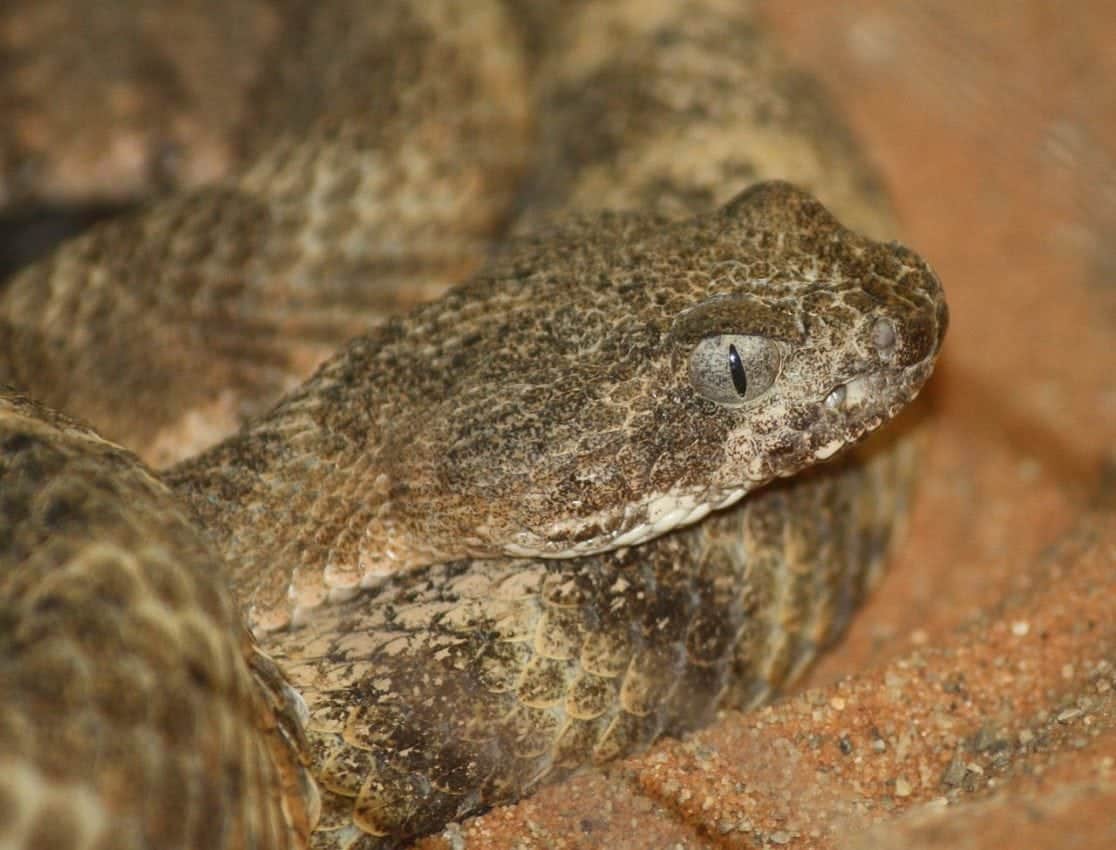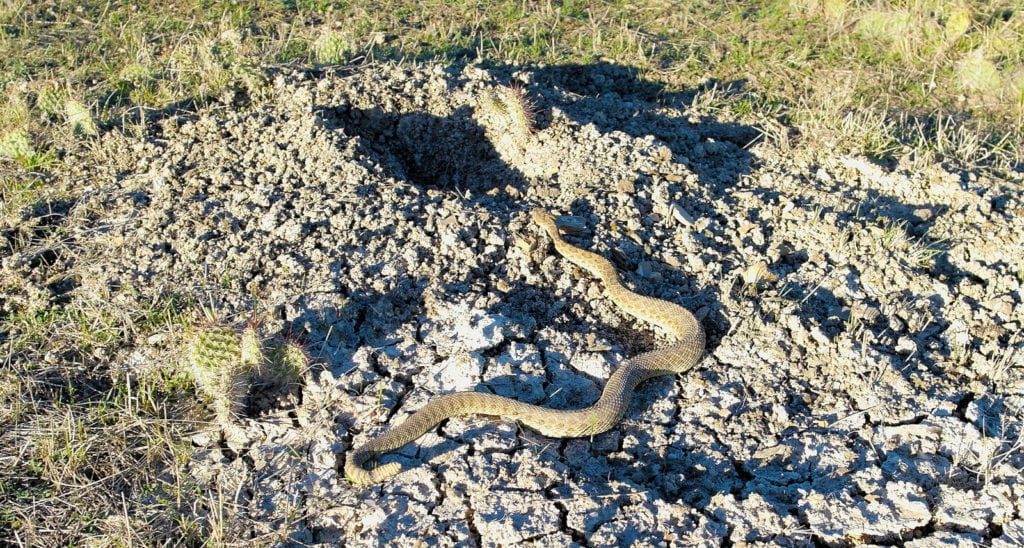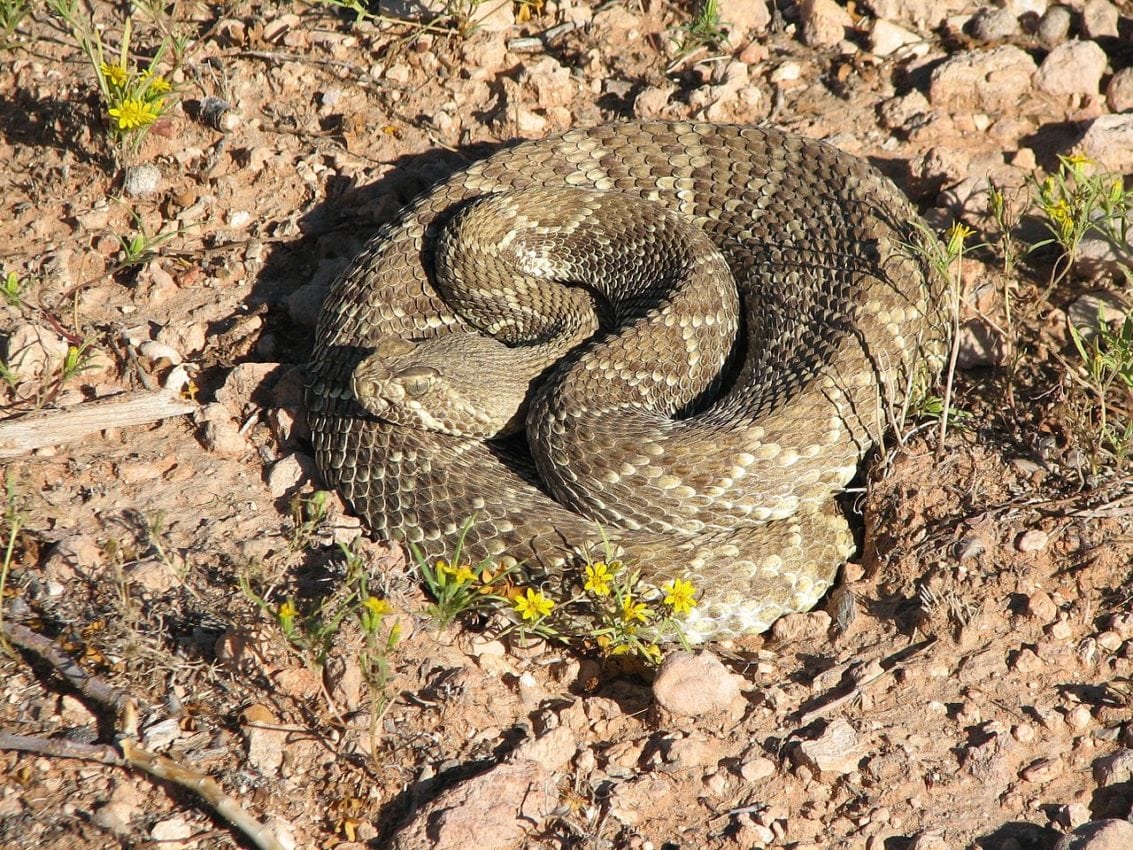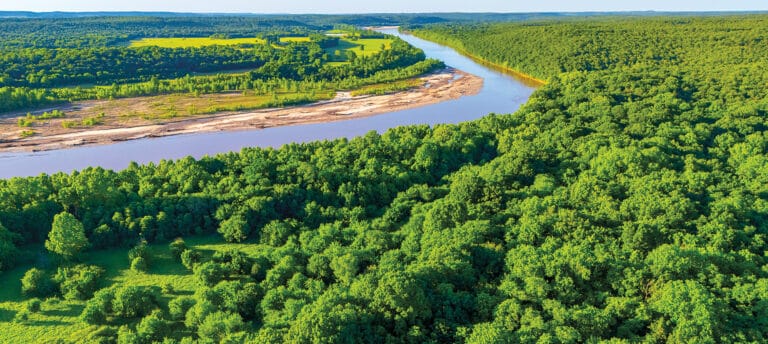This is a guest post from OutdoorHub, a leading publisher of news and advice for hunters, anglers and shooters.
Written by Daniel Xu, OutdoorHub
These guys are why we have the big boots.
There are over 20 species of venomous snakes in North America. In the United States, there is at least one species of venomous snake in every state except Alaska. About 8,000 people are bitten every year, but thanks to modern medicine, antivenom keeps the number of fatalities at only a handful.
In this list, we have complied a list of the continent’s most deadly snakes due to either the potency of their venom, their aggressiveness, or the sheer number of deaths attributed to them. Venomous snakes rarely bite humans, but sometimes it can be all too easy to unintentionally intrude on their space.
Be careful out there, and keep an eye out for these critters. They are listed in no particular order.
1. Cottonmouth (Agkistrodon piscivorus)

The cottonmouth is one of the most feared venomous snakes in North America. Its powerful cytotoxic venom is so destructive that it can eat away flesh and result in grisly amputations. Their preference for hiding in water and attacking when least expected means that bites are also relatively frequent. Thankfully, modern CroFab antivenom keeps fatalities very low. In fact, cottonmouth venom is one of the main components of the treatment, along with venom from diamondback and Mojave rattlesnakes.
2. Timber rattlesnake (Crotalus horridus)

Timber rattlesnakes are dangerous on all fronts. They are large, have long fangs, and sport potent venom, which they can pump an alarming amount of into their prey at any one time. Thankfully for us though, they are also known for their mild temperament and characteristic rattle. Timber rattlesnakes are among the most patient of their kind and will often give lengthy warnings before attacking. Due to this, few fatalities have ever been reported.
3. Black diamond rattlesnake (Crotalus oreganus)

This dangerous rattlesnake boasts no fewer than seven different subspecies, some of which have the notable distinction of having a highly toxic venom that attacks nerve endings, requiring a much higher dose of antivenom to treat. They can be found widely across the western half of North America, from British Columbia to northern Mexico.
4. Tiger rattlesnake (Crotalus tigris)

The tiger only lives in a small area near the Arizona-Mexico border and few bites have been documented. The small amount of venom it injects per bite also means that fatalities are very rare.
5. Copperhead (Agkistrodon contortrix)

The copperhead is perhaps responsible for the most bites of any snake on this list. It’s not because the snake is inherently more aggressive, but because copperheads tend to “freeze” when met with approaching humans—instead of fleeing like most other, sensible snakes—and will bite when stepped on.
The copperhead also has what is believed to be the weakest venom potency of all pit vipers, which is a happy coincidence for the snake that is otherwise most likely to bite you.
6. Eastern coral snake (Micrurus fulvius)

Eastern coral snakes are very reclusive and are rarely seen, which is great for hunters and hikers across the American Southeast. The eastern coral snake was once seen as the most dangerous snake in the region. While that reputation hasn’t exactly subsided, experts now say that fatalities from this dangerous species are actually very rare. This is thought to be because the coral snake has very little control of how much venom it can inject into a victim.
At any one time, a coral snake can hold enough venom to kill five people, yet in most defensive bites it only injects a minuscule amount. Still, a large enough dose can kill as early as within two hours, making this snake one of the deadliest on this list.
7. Western diamondback rattlesnake (Crotalus atrox)
This snake’s method of venom delivery is perhaps the opposite of the tiger rattlesnake. The western diamondback has a relatively weak venom, but it can pump it out in high quantities, making it incredibly deadly. General symptoms include pain, heavy internal bleeding, swelling, muscle damage, and necrosis.
It is also single-handedly responsible for the most snake-related fatalities in Mexico, and only lost to its eastern cousin in the number of U.S. deaths.
8. Eastern diamondback rattlesnake (Crotalus adamanteus)

Indiana Jones may be the world’s most famous fictional archaeologist, but he’ll scream like a schoolgirl if he ever meets one of these. The eastern diamondback is the largest of all North American venomous snakes, and it is arguably the most deadly. It has the largest fangs of any rattlesnake species in the world, a very high venom yield, and an absolutely devastating potency. The venom is so powerful, it can induce bleeding from the mouth and from the wound site. A bite from this snake has a mortality rate as high as 30 percent.
9. Prairie rattlesnake (Crotalus viridis)

Compared to the two species that came before it and the one next up on this list, the prairie rattlesnake is practically harmless. Well, maybe not, but this rattlesnake is still responsible for far less deaths than its diamondback cousins. It can be found across the Western United States, southwestern Canada, and northern Mexico. Its venom contains potent neurotoxins as well.
10. Mojave rattlesnake (Crotalus scutulatus)

If you gauge deadliness by venom, this is one of the big boys. The venom of a Mojave rattlesnake is widely considered the most potent of all rattlesnakes, even surpassing that of the tiger rattlesnake. The bite does not at first appear to be especially worrying, due to delayed symptoms, but victims can eventually experience blurred vision and respiratory failure. Their venom is veritable cocktail of destructive enzymes and proteins designed to kill prey, which led to the Mojave rattlesnake’s now legendary reputation.
Needless to say, untreated bites are often fatal.
Cover image: Copperhead snake (Ltshears/Wikimedia Commons)
Visit OutdoorHub for more news, advice and reviews about hunting, fishing, shooting and other outdoor pursuits.


